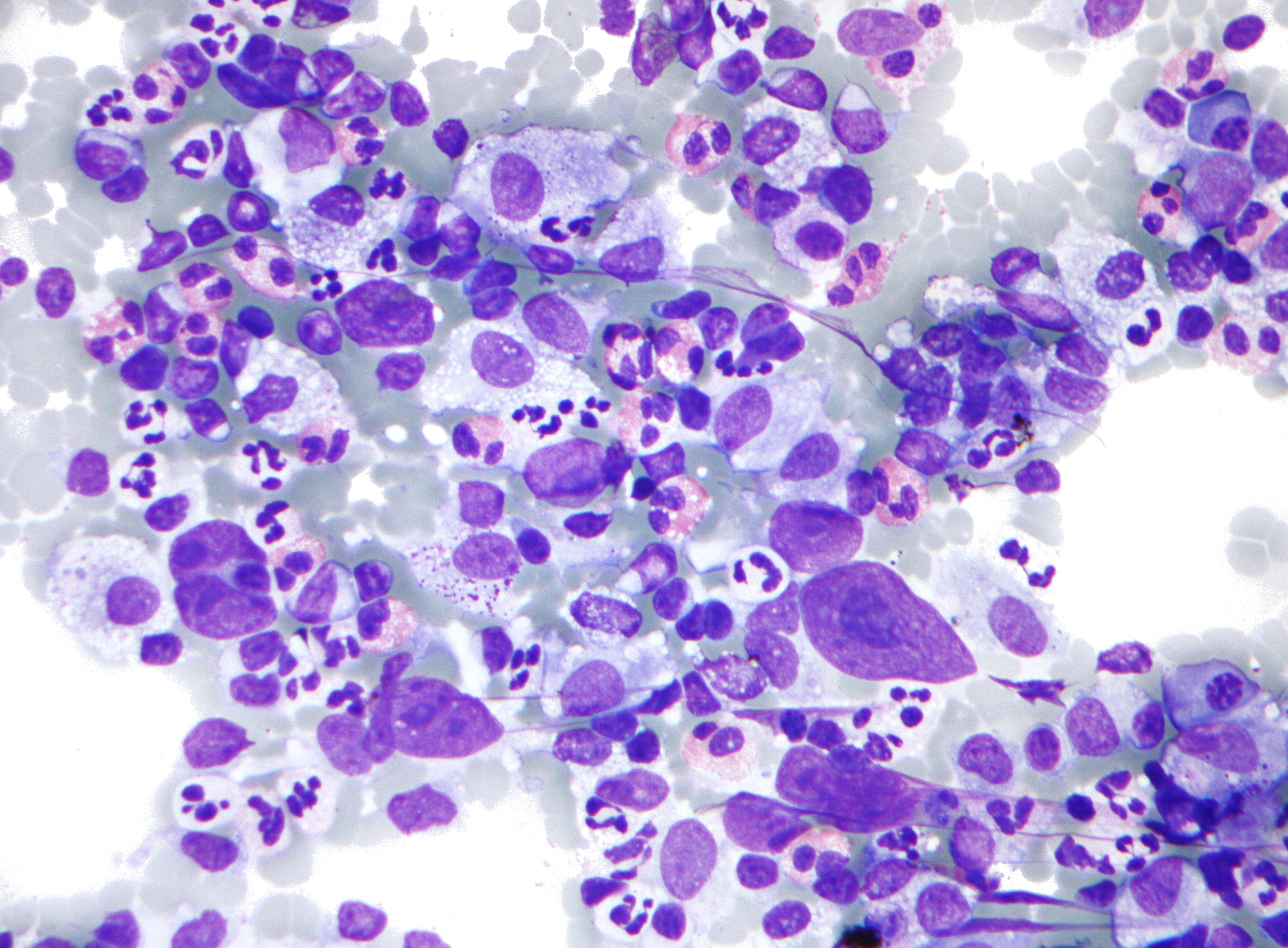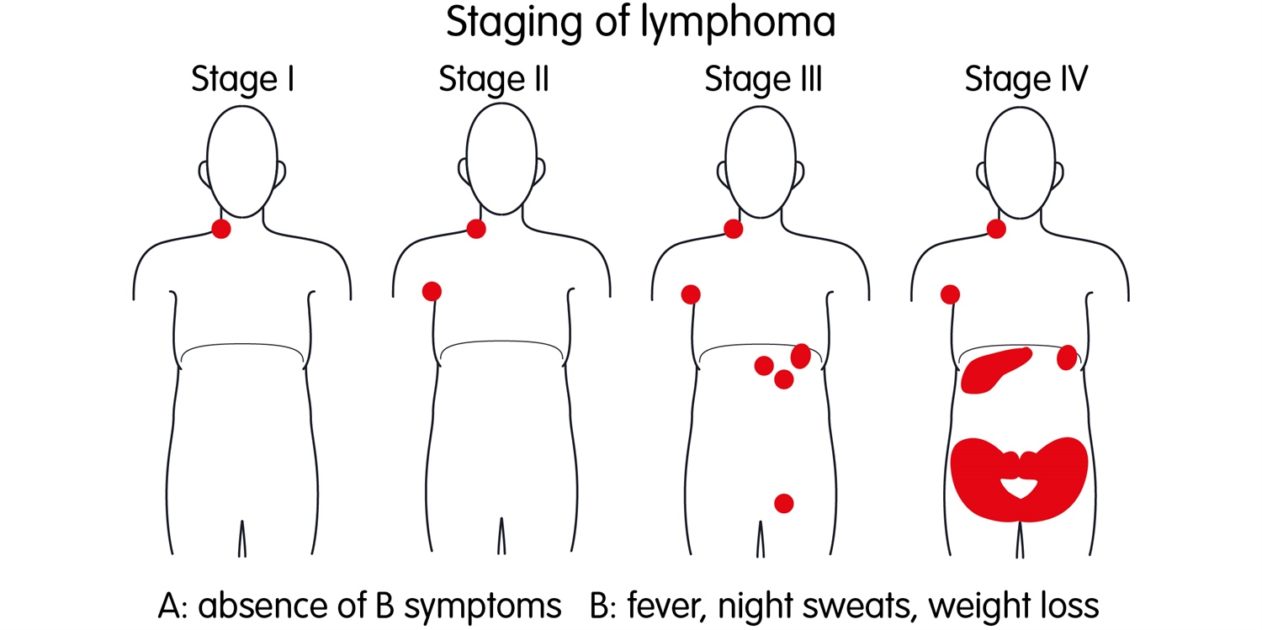Table of Contents
Hodgkin’s lymphoma (or Hodgkin’s disease) develops in the vessels located in various parts of your body like the armpits, groin, neck, and inside the abdomen. Cells specific for Hodgkin’s lymphoma are called Reed-Sternberg (also called Sternberg cell or Sternberg-Reed cell).
Lymph nodes are part of the immune system of your body and help it fight infection and all pathogenic attacks from bacteria and other harmful substances. The lymphatic system consists of an interstitial fluid called lymph. Containing white blood cells, the lymph is purified from the lymph nodes and then transported into the bloodstream by the lymphatic vessels.
Hodgkin’s Lymphoma Statistics
The incidence of Hodgkin lymphoma is about 1 in 25,000 people; it accounts for 0.5-1% of all cancers worldwide. The incidence of Hodgkin lymphoma is higher in developed countries than in developing countries. For example, residents of the United States, Canada and Northern Europe are more victims of the disease. According to the American Cancer Society, it is estimated that 8510 men and women (4,640 men and 3,870 women) were diagnosed with Hodgkin lymphoma in the United States in 2009; around 1290 people died of it.

The incidence varies with age and race. From 2002-2006, the median age at diagnosis for Hodgkin lymphoma was thirty-eight; thus, ages and percentages of people diagnosed with Hodgkin lymphoma during 2002-2006 were approximately:
- 11.9% under age 20
- 32.1% between 20 and 34
- 16.9% between 35 and 44
- 12.3% between 45 and 54
- 9.2% between 55 and 64
- 8.5% between 65 and 74
- 7.0% between 75 and 84
- 2.1% 85+ years of age
According to the same report by the National Cancer institute, incidence rates by race and sex was:
- All races: 3.1 per 100,000 men – 2.5 per 100,000 women
- White: 3.3 per 100,000 men – 2.7 per 100,000 women
- Black: 2.9 per 100,000 men – 2.3 per 100,000 women
- Asian/Pacific Islander: 1.5 per 100,000 men – 1.1 per 100,000 women
- Hispanic: 2.9 per 100,000 men – 1.9 per 100,000 women.
Hodgkin’s Lymphoma Causes
White blood cells are substances of the lymph nodes and are produced by a group of cells in the bone marrow called hematopoietic stem cell (HSCs). White blood cells are in your blood, connective tissues, and lymphoid organs like the lymph nodes, spleen, tonsils, adenoids, and Peyer’s patches. Their main role is to protect you from getting sick. To ensure their protective function, white blood cells are divided into several categories: T lymphocytes (or T cells), natural killer cells (or NK cells), and B lymphocytes (or B cells). The main role of B lymphocytes is to form antibodies against pathogenic attacks.
Hodgkin’s lymphoma occurs when B cells begin to divide and multiply anarchically to form malignant growth (cancer). This cellular disorder impairs the natural defense system of your body against infections, which makes it vulnerable to all type of diseases.
The causes of Hodgkin’s lymphoma are not known with certainty. Researchers believe a benign infection caused by Epstein-Barr (EBV), which belongs to the same virus family as herpes, can play a role in the development of certain forms of Hodgkin’s disease. The theory is, however, argued by many scientists.
In addition, research has shown that a prolonged exposure of a mother during pregnancy to household pesticides significantly increases the risk for the child to develop Hodgkin’s lymphoma. This risk factor plays a role only in the development of Hodgkin’s lymphoma nodular sclerosis, a form of cancer that affects mostly older girls.
Hodgkin’s Lymphoma Risk Factors
Although the cause of Hodgkin’s lymphoma is not yet known, several factors are suspected in contributing to its occurrence:
Age – Hodgkin lymphoma tends to occur in two separate age groups: young adults between 15 -35 and seniors over 55 years.
Sex – Hodgkin lymphoma is more common among males.
HIV/AIDS – You have a higher risk to develop Hodgkin lymphoma if you are HIV positive. In addition, any medical condition or treatment that weakens your immune system puts you in danger of becoming a Hodgkin lymphoma victim.
Being in a developed country – The incidence of Hodgkin lymphoma is higher in developed countries like the United States, Canada, and countries in the Northern Europe.
Family history – Although genetic factors do not play any role in the occurrence of Hodgkin’s lymphoma, if you have a close family member with the disease, your risk is higher compared to other people who do not.
Having Mono (infectious mononucleosis) – Infectious mononucleosis is a disease caused by the Epstein-Barr virus. It is also known as “kissing disease” because the virus is transmitted by saliva; having it increases your chance of developing Hodgkin’s lymphoma.
Hodgkin’s Lymphoma Symptoms
You may have Hodgkin’s lymphoma for a long period without experiencing any symptoms. If you have symptoms, you will have at least one or more painless swollen lymph nodes under your armpit, neck, or groin, which most often are discovered during a consultation. In general, the lymph nodes swell without any infectious factor and persist despite taking antibiotics. As the disease worsens, the following symptoms may also emerge:
- fever and chills
- night sweats
- weight loss
- intense fatigue
- loss of appetite
- difficulty breathing, often accompanied by cough
- pain in the chest
- pain when ingest alcoholic beverages
- increased spleen size (splenomegaly)
- skin lesions accompanied by itching
Hodgkin’s Lymphoma Complications
The lymphoid tissues are connected throughout your body, which causes Hodgkin’s lymphoma to spread from one lymph node to another. In severe cases, Hodgkin’s lymphoma can spread from the lymphatic system to distant organs. In addition to cancer, the treatment itself may cause complications.
The most common complications of Hodgkin’s lymphoma and its treatment are the following:
- Leukemia – Chemotherapy drugs used to treat the lymphoma can cause leukemia.
- Non-Hodgkin’s lymphoma(NHL) – There is a risk of non-Hodgkin lymphoma associated in any treatment used to treat lymphoma.
- Second malignancy – Secondary tumors such as tumors in the lungs, breasts, or gastrointestinal system may occur even years after the Hodgkin’s lymphoma treatment.
- Cardiovascular disease – Among the complications of Hodgkin lymphoma treatment are myocardial infarction and stroke. Complications depend on the amount of radiation received during the radiation therapy. In general, the risk of myocardial infarction or stroke increases when the radiation dose is greater than 30 grays.
- Thyroid disorder – About 50% of cases of Hodgkin’s lymphoma lead to thyroid complications. Scientists believe that the problem is related to mantle irradiation, radiation performed above the diaphragm in the treatment of Hodgkin’s lymphoma. After mantle radiation the risk of breast cancer seems to increase.
- Infertility – Radiotherapy below the diaphragm and chemotherapy containing alkylating agents may lead to infertility. The treatment often leads to an absence of menstruation; in women under twenty-five years, this problem is often reversible. Among men, the protection of testes during the radiation therapy can help prevent infertility problems.
- Other problems -After Hodgkin’s lymphoma treatment, you are at risk of developing zoster or lung infection. Scientists believe that these problems are related to bleomycin and adriamycin, two of the chemotherapy drugs used to treat Hodgkin’s lymphoma.
Hodgkin’s Lymphoma Diagnosis
Your doctor will do a physical exam to search for signs of Hodgkin’s lymphoma in your body. He can also ask you questions about your medical history and the symptoms you experience to help him have a better idea of your condition. During the physical examination, your oncologist will look for signs of swollen lymph nodes. Depending on the volume of lymph nodes, a simple touch may reveal a mass, a vivid indication of Hodgkin’s lymphoma. In addition, if you have Hodgkin’s lymphoma, the size of your spleen tends to increase under the left rib cage.
However, these procedures are not sufficient to confirm the diagnosis; other medical techniques must be performed, which may include:
- Biopsy – To confirm a Hodgkin’s lymphoma diagnosis, a biopsy is always necessary. Your specialist can perform a needle biopsy to remove a small sample. He can choose to perform a surgical biopsy to remove the entire gland in order to obtain enough tissue for laboratory analysis. This procedure helps your physician to detect the presence of Reed-Sternberg cells, the main indicator of Hodgkin’s lymphoma.
- Blood analysis – A blood test will be done to determine the quantity and quality of your white and red blood cells. The blood test may also include an analysis of blood chemistry and the search for an abnormal erythrocyte sedimentation rate (ESR). High ESR levels are always seen in certain cancers of the white blood cells and rheumatoid disease.
- Chest X-ray – This imaging technique is performed to detect swollen lymph nodes in your body that were not palpable during the physical examination
- CT scan/MRI of the thorax – A CT scan or magnetic resonance imaging (MRI) of the thorax, pelvis, and abdomen is important to determine if you have a metastatic Hodgkin’s lymphoma.
- Positron emission tomography (PET) scan – This imaging technique aims to discover areas where cellular activity is increased, which often indicates the position of the cancer.
- Bone marrow aspiration and biopsy– Under local anesthesia, your physician removes a tiny sample of your bone marrow and bone to be examined under microscope. This procedure allows your doctor to determine if bone marrow has been affected by the cancer.
Non-Hodgkin’s Lymphoma Stages
Once the cancer is detected in your body, your doctor will perform other medical exams determine its stage. The following are stages used in clinical evaluation of non-Hodgkin lymphoma:

- Stage I – At this stage, the cancer has affected a single lymph node or one organ outside the lymph nodes.
- Stage II – At stage 2, the cancer has spread into two or more lymph nodes located in the same side of the diaphragm.
- Stage III – The cancer has spread into the lymph node groups on both sides of the diaphragm. The lymphoma may also spread into the spleen and/or an organ near the affected lymph nodes.
- Stage IV – At stage 4, the cancer has invaded other organs outside the lymphatic system such as the liver, lung, or bone.
- Recurrent – The cancer has returned after treatment. Recurrent lymphoma (non-Hodgkin’s lymphoma or Hodgkin’s lymphoma) is more difficult to be treated.
Non-Hodgkin’s Lymphoma Treatment
Non-Hodgkin lymphoma treatment depends on the type of cancer you have, its stage, your health, and your age. If only one lymph node is affected by the tumor, you can definitely be cured by radiotherapy. In advanced non-Hodgkin’s lymphoma, survival chances decrease considerably. In general, non-Hodgkin’s lymphoma treatment includes radiotherapy, chemotherapy, biotherapy, and other therapeutic methods such as stem cell transplantation.
Radiotherapy (Radiation therapy)
Radiotherapy consists of using high doses of X-rays to kill cancer cells in order to eliminate or shrink the tumor. If the cancer is too advanced to be completely destroyed, radiation therapy can reduce symptoms and prolong your life. In the case of a non aggressive non-Hodgkin lymphoma, radiotherapy combined with chemotherapy can lead to a complete cure in about 50% of cases.
Chemotherapy
Chemotherapy is the use of anticancer drugs to kill cancer cells and prevent metastases. Chemotherapy is often used to treat advanced non-Hodgkin lymphoma. Sometimes, the cancer does not respond to the chemotherapy. If this occurs, your oncologist will intensify the chemotherapy drugs to increase your survival chances. In general, a combination of chemotherapy and radiation therapy is used to treat voluminous lymphomas or to reduce pain or bleeding caused by the tumor.
Stem cell transplant
High doses of chemotherapy lead to damage in the bone marrow. To repair this damage, your oncologist can perform or recommend a stem cell transplantation. The stem cell transplantation is performed to replace damaged blood cells with healthy stem cells, instead of waiting for your body to produce them. Usually, healthy stem cells are taken from you or a compatible donor before the treatment and frozen for injection into your body after the chemotherapy. In patients under fifty-five years, the bone marrow can give very satisfactory results.
Biotherapy (immunotherapy)
Also called immunotherapy, biotherapy uses substances to stimulate the natural defense (immune system) of your body so it can attack and destroy the cancer cells. One of the biotherapy drugs approved by the Food and Drug Administration (FDA) for the treatment of B cell non-Hodgkin’s lymphoma is Rituximab (Rituxan); it often is associated with radio immunotherapy. The most common side effects of Rituximab include:
- headache
- nausea
- facial flushing
- dizziness
Radioimmunotherapy
Radioimmunotherapy is a therapeutic method consists of injecting in your body a radioactive antibody that has the property to bind selectively to tumor cells. This therapy is performed to irradiate small tumors scattered throughout your body. Two radioimmunotherapy drugs currently approved by the Food and Drug Administration (FDA) in the treatment of non-Hodgkin’s lymphoma are ibritumomab (Zevalin) and tositumomab (Bexxar).
Common side effects of those drugs include:
- nausea
- vomiting
- diarrhea
- constipation
- headache
- stomach upset
- dizziness
- flu-like symptoms: cough, chills, muscle aches



